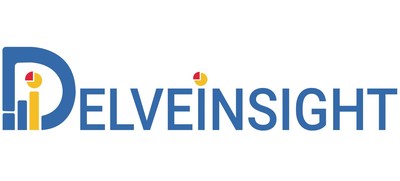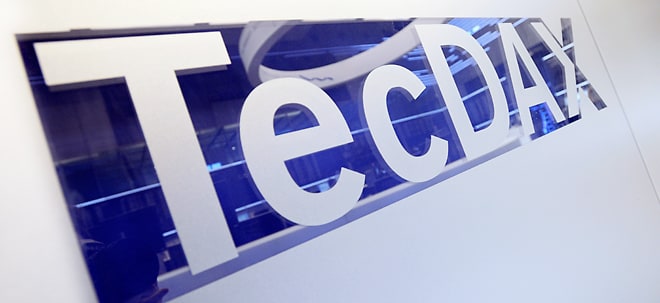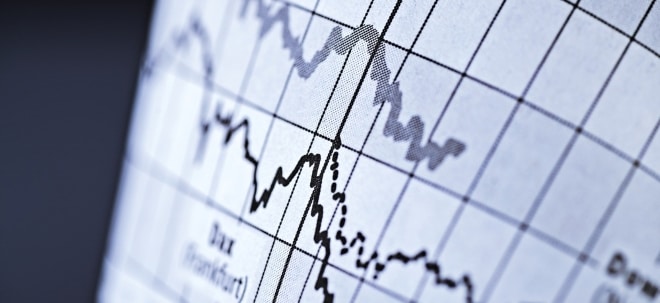Interleukin-17 Inhibitors Market to Witness Strong Growth During the Forecast Period (2020-2034) Driven by Expanding Indications and Therapeutic Innovation | DelveInsight
The interleukin-17 inhibitors market is expected to remain strong in rheumatology (psoriasis and arthritis), with potential expansion into hidradenitis suppurativa and other dermatologic conditions. The emergence of advanced biologics like sonelokimab and izokibep could shift market dynamics, offering more targeted, tissue-penetrant therapies that may outperform first-generation IL-17 inhibitors.
LAS VEGAS, July 21, 2025 /PRNewswire/ -- DelveInsight's Interleukin-17 Inhibitors Market Size, Target Population, Competitive Landscape & Market Forecast report includes a comprehensive understanding of current treatment practices, addressable patient population, which includes top indications such as Plaque psoriasis, Psoriasis, Hidradenitis Suppurativa, and others. The selected indications are based on approved therapies and ongoing pipeline activity. The report also provides insights into the emerging interleukin-17 inhibitors, market share of individual therapies, and current and forecasted market size from 2020 to 2034, segmented into 7MM.

Key Takeaways from the Interleukin-17 Inhibitors Market Report
- As per DelveInsight's analysis, the total market size of interleukin-17 inhibitors in the 7MM is expected to surge significantly by 2034.
- The report provides the total potential number of patients in the indications, such as Plaque psoriasis, Psoriasis, Hidradenitis Suppurativa, and others.
- Leading interleukin-17 inhibitor companies, such as MoonLake Immunotherapeutics, Affibody Medical AB, SFA Therapeutics, DICE Therapeutics, Eli Lilly, and others, are developing novel Interleukin-17 inhibitors that can be available in the interleukin-17 inhibitors market in the coming years.
- Some of the key interleukin-17 inhibitors in the pipeline include Sonelokimab, Izokibep, SFA-002, Simepdekinra (DC-853), and others.
- In April 2025, Affibody Medical AB reported positive Phase II clinical results for izokibep in psoriatic arthritis, highlighting its potent IL-17A inhibition and clinical improvements in joint and skin symptoms.
- In March 2025, UCB announced further long-term data from the Phase III trials and their open-label extensions, investigating BIMZELX in adults with moderate-to-severe plaque psoriasis, were presented as six posters at the 2025 American Academy of Dermatology (AAD) annual meeting in Orlando, Florida. Dual inhibition with bimekizumab-bkzx demonstrated high efficacy and sustained clinical benefits across different adult patient populations living with this common inflammatory skin condition.
- In March 2025, SFA Therapeutics announced the presentation of two head-to-head preclinical studies of its oral psoriasis treatment candidate, SFA-002, at the American Academy of Dermatology Annual Meeting in Orlando, Florida.
- In March 2025, SFA Therapeutics announced positive data from its Phase Ib clinical trial of SFA-002, an oral treatment for mild-to-moderate chronic plaque psoriasis. The study met its primary endpoint of safety, with no TRAEs or toxicities observed during the treatment period, and no rebound effects were noted.
Discover which indication is expected to grab the major interleukin-17 inhibitors market share @ Interleukin-17 Inhibitors Market Report
Interleukin-17 Inhibitors Market Dynamics
The interleukin-17 inhibitors market has witnessed significant growth over the past decade, driven by the increasing prevalence of chronic immune-mediated inflammatory diseases such as psoriasis, psoriatic arthritis, and axial spondyloarthritis. IL-17 inhibitors target a key cytokine pathway involved in the inflammatory response, providing robust efficacy in patients who are either unresponsive to conventional therapies or require biological treatment due to disease severity. Major pharmaceutical players like Novartis (COSENTYX), Eli Lilly (TALTZ), and UCB (BIMZELX) have successfully commercialized IL-17 inhibitors, creating a competitive but growing therapeutic space. The expansion of approved indications, alongside strong clinical trial outcomes for newer agents targeting IL-17F or dual IL-17A/IL-17F inhibition, continues to fuel market momentum.
Market dynamics are also influenced by the evolving treatment landscape, where IL-17 inhibitors compete with other biological classes such as TNF inhibitors and IL-23/IL-12-23 inhibitors. Despite strong efficacy, particularly in the skin and joint manifestations, positioning IL-17 inhibitors as first-line biologics remains a challenge due to physician preference for older, well-established therapies and payer reimbursement considerations. However, increasing real-world evidence supporting long-term safety and durability of response for IL-17 inhibitors is gradually shifting treatment paradigms. Additionally, head-to-head trials showcasing superior efficacy profiles over TNF inhibitors in psoriasis further strengthen the competitive positioning of IL-17 inhibitors.
On the innovation front, pharmaceutical companies are investing in next-generation IL-17 inhibitors with improved dosing convenience, enhanced specificity, and broader indications. Pipeline candidates targeting diseases beyond dermatology and rheumatology, such as hidradenitis suppurativa, uveitis, and inflammatory bowel disease, hold promise for future market expansion. Moreover, subcutaneous and intravenous formulations, along with self-administered devices, are being developed to enhance patient adherence and expand the patient base. These advances reflect the industry's efforts to differentiate its products in an increasingly crowded market.
However, market growth is not without challenges. Patent expirations for key products in the next 5-10 years are likely to invite biosimilar competition, potentially driving price erosion. Moreover, payer pressure to contain biological therapy costs and the emergence of novel oral small molecules such as JAK inhibitors pose additional threats to the IL-17 inhibitors' market share.
In summary, the IL-17 inhibitors market is poised for steady growth, supported by strong clinical efficacy, expansion into new indications, and increasing physician and patient acceptance. However, the market's long-term trajectory will depend on manufacturers' ability to navigate competitive pressures, reimbursement challenges, and biosimilar threats, while continuing to innovate in drug formulation and indication expansion.
Interleukin-17 Inhibitors Treatment Market
The IL-17 inhibitor class has become a key treatment approach for chronic immune-mediated inflammatory conditions, notably psoriasis, plaque psoriasis, psoriatic arthritis (PsA), and axial spondyloarthritis (AS). These therapies specifically block IL-17A, IL-17F, or the IL-17 receptor, which are critical drivers of inflammation mediated by Th17 cells.
Approved IL-17 inhibitors currently include COSENTYX, TALTZ, SILIQ, and BIMZELX. Since the 2015 FDA approval of Novartis' secukinumab (COSENTYX), the first drug in this class, the market has grown consistently, propelled by strong clinical results, fast symptom relief, and broadened use across dermatology and rheumatology indications. COSENTYX leads the market, followed by Eli Lilly's TALTZ (ixekizumab) and Amgen/Kyowa Kirin's SILIQ (brodalumab). More recently, UCB's BIMZELX (bimekizumab), a dual inhibitor of IL-17A and IL-17F, has gained approval in Europe and the US.
BIMZELX is a humanized IgG1/κ monoclonal antibody that binds selectively to IL-17A, IL-17F, and IL-17AF cytokines, preventing their interaction with the IL-17 receptor complex. In October 2024, the FDA approved a 320 mg dose of BIMZELX for adults with moderate-to-severe plaque psoriasis and psoriatic arthritis with skin involvement. For psoriatic arthritis without skin symptoms, non-radiographic axial spondyloarthritis, and ankylosing spondylitis, a 160 mg dose is recommended.
SILIQ is a human IL-17 receptor A (IL-17RA) blocker approved for adults with moderate to severe plaque psoriasis who are candidates for systemic therapy or phototherapy and have not responded to, or lost response to, other systemic treatments. Marketed under different names globally, it is called "SILIQ" in the US, "KYNTHEUM" in Europe, and "LUMICEF" in Japan. In July 2017, AstraZeneca and MedImmune announced that their partner, LEO Pharma, received full EU approval for KYNTHEUM in all 28 member states for moderate-to-severe plaque psoriasis. Earlier, in February 2017, the US FDA approved SILIQ for adults with moderate-to-severe plaque psoriasis, with the drug administered via injection.
In May 2015, Amgen terminated its partnership with AstraZeneca on the development of this psoriasis biologic, citing concerns over potentially restrictive labeling related to the drug's risk of suicidal ideation.
Learn more about the interleukin-17 inhibitors @ Interleukin-17 Inhibitors Analysis
Key Emerging Interleukin-17 Inhibitors and Companies
The emerging drug pipeline for IL-17 inhibitors is diverse and includes several promising candidates, such as Sonelokimab (MoonLake Immunotherapeutics), Izokibep (Affibody Medical AB), SFA-002 (SFA Therapeutics), Simepdekinra (DICE Therapeutics/Eli Lilly) and others.
Sonelokimab, a next-generation biologic developed by MoonLake Immunotherapeutics, utilizes a nanobody-based approach to target both interleukin-17A and interleukin-17F. It is in advanced clinical stages for various immune-mediated inflammatory diseases. The drug has shown encouraging outcomes in moderate-to-severe hidradenitis suppurativa (HS) and is currently being assessed in Phase III trials under the MIRA study. In addition, Phase II studies in psoriatic arthritis and axial spondyloarthritis (axSpA) have demonstrated significant improvements in both joint and skin symptoms, underscoring its therapeutic potential in rheumatology.
In January 2025, MoonLake Immunotherapeutics broadened sonelokimab's clinical pipeline by launching three additional studies. These include VELA-TEEN, a Phase III trial for adolescent HS patients; LEDA, a Phase II study in palmoplantar pustulosis (PPP); and S-OLARIS, a Phase II trial targeting axial spondyloarthritis (axSpA).
Izokibep, a compact IL-17A inhibitor developed by Affibody and ACELYRIN, is designed for enhanced potency and tissue penetration. It has demonstrated robust clinical activity in inflammatory disorders such as hidradenitis suppurativa, psoriatic arthritis, axial spondyloarthritis, and plaque psoriasis. Its small molecular format allows for subcutaneous administration, potentially reducing injection frequency and improving tissue targeting compared to conventional biologics. Izokibep is currently in Phase III trials for ankylosing spondylitis (AS) and psoriatic arthritis (PsA), where it has shown promising early results and a favorable safety profile.
In February 2025, Affibody reacquired the global rights to izokibep. Previously, in 2021, Affibody had licensed worldwide development and commercialization rights (excluding select Asian territories) to ACELYRIN through a collaboration agreement.
The anticipated launch of these emerging therapies are poised to transform the interleukin-17 inhibitors market landscape in the coming years. As these cutting-edge therapies continue to mature and gain regulatory approval, they are expected to reshape the interleukin-17 inhibitors market landscape, offering new standards of care and unlocking opportunities for medical innovation and economic growth.
To know more about interleukin-17 inhibitors clinical trials, visit @ Interleukin-17 Inhibitors Treatment
Interleukin-17 Inhibitors Overview
Interleukin-17 (IL-17) inhibitors are monoclonal antibody therapies designed to block IL-17A or its receptor, both of which play a critical role in promoting inflammation associated with various autoimmune and inflammatory disorders. These treatments work by either directly neutralizing IL-17A or inhibiting its receptor (IL-17RA), thereby halting the downstream signaling pathways that attract immune cells and intensify inflammation. IL-17 inhibitors are mainly prescribed for managing moderate-to-severe cases of psoriasis, psoriatic arthritis, and ankylosing spondylitis. By interfering with IL-17 signaling, these drugs help control chronic inflammation, minimize tissue damage, and alleviate disease symptoms.
Interleukin-17 Inhibitors Epidemiology Segmentation
The interleukin-17 inhibitors market report proffers epidemiological analysis for the study period 2020–2034 in the 7MM, segmented into:
- Total Cases of Selected Indications for IL-17 Inhibitor
- Total Eligible Patient Pool of Selected Indications for IL-17 Inhibitor
- Total Treated Cases of Selected Indications for IL-17 Inhibitor
Interleukin-17 Inhibitors Report Metrics | Details |
Study Period | 2020–2034 |
Interleukin-17 Inhibitors Report Coverage | 7MM [The United States, the EU-4 (Germany, France, Italy, and Spain), the United Kingdom, and Japan] |
Key Indications Covered in the Report | Plaque psoriasis, Psoriasis, Hidradenitis Suppurativa, and others |
Key Interleukin-17 Inhibitors Companies | MoonLake Immunotherapeutics, Affibody Medical AB, SFA Therapeutics, DICE Therapeutics, Eli Lilly, UCB Pharma, Novartis, AstraZeneca, Bausch Health, Kyowa Kirin, LEO Pharma, and others |
Key Interleukin-17 Inhibitors | Sonelokimab, Izokibep, SFA-002, Simepdekinra (DC-853), BIMZELX, COSENTYX, SILIQ, TALTZ, and others |
Scope of the Interleukin-17 Inhibitors Market Report
- Interleukin-17 Inhibitors Therapeutic Assessment: Interleukin-17 Inhibitors current marketed and emerging therapies
- Interleukin-17 Inhibitors Market Dynamics: Conjoint Analysis of Emerging Interleukin-17 Inhibitors Drugs
- Competitive Intelligence Analysis: SWOT analysis and Market entry strategies
- Unmet Needs, KOL's views, Analyst's views, Interleukin-17 Inhibitors Market Access and Reimbursement
Discover more about interleukin-17 inhibitors in development @ Interleukin-17 Inhibitors Clinical Trials
Table of Contents
1 | Key Insights |
2 | Report Introduction |
3 | Executive Summary of Interleukin-17 (IL-17) Inhibitors |
4 | Key Events |
5 | Epidemiology and Market Forecast Methodology of IL-17 Inhibitors |
6 | IL-17 Inhibitors Market Overview at a Glance in the 7MM |
6.1 | Market Share (%) Distribution by Therapies in 2024 |
6.2 | Market Share (%) Distribution by Therapies in 2034 |
6.3 | Market Share (%) Distribution by Indications in 2024 |
6.4 | Market Share (%) Distribution by Indications in 2034 |
7 | IL-17 Inhibitors: Background and Overview |
7.1 | Introduction |
7.2 | Potential of IL-17 Inhibitor in Different Indications |
7.3 | Clinical Applications of IL-17 Inhibitor |
8 | Target Patient Pool |
8.1 | Key Findings |
8.2 | Assumptions and Rationale: 7MM |
8.3 | Epidemiology Scenario in the 7MM |
8.4 | Total Cases in Selected Indications for IL-17 Inhibitors in the 7MM |
8.5 | Total Eligible Patient Pool for IL-17 Inhibitors in Selected Indications in the 7MM |
8.6 | Total Treated Cases in Selected Indications for IL-17 Inhibitors in the 7MM |
9 | Marketed Products of IL-17 Inhibitors |
9.1 | Key Competitors |
9.2 | BIMZELX (bimekizumab): UCB Pharma |
9.2.1 | Product Description |
9.2.2 | Regulatory Milestones |
9.2.3 | Other Developmental Activities |
9.2.4 | Clinical Development |
9.2.4.1 | Clinical Trial Information |
9.2.5 | Safety and Efficacy |
9.2.6 | Analyst Views |
9.3 | SILIQ/KYNTHEUM/LUMICEF (brodalumab): AstraZeneca/Bausch Health/Kyowa Kirin/LEO Pharma |
9.3.1 | Product Description |
9.3.2 | Regulatory Milestones |
9.3.3 | Other Developmental Activities |
9.3.4 | Clinical Development |
9.3.4.1 | Clinical Trial Information |
9.3.5 | Safety and Efficacy |
9.3.6 | Analyst Views |
List to be continued in the final report… | |
10 | Emerging Therapies of IL-17 Inhibitors |
10.1 | Key Competitors |
10.2 | Sonelokimab: MoonLake Immunotherapeutics |
10.2.1 | Product Description |
10.2.2 | Other Developmental Activities |
10.2.3 | Clinical Development |
10.2.3.1 | Clinical Trial Information |
10.2.4 | Safety and Efficacy |
10.2.5 | Analyst Views |
10.3 | Izokibep: Affibody Medical AB |
10.3.1 | Product Description |
10.3.2 | Other Developmental Activities |
10.3.3 | Clinical Development |
10.3.3.1 | Clinical Trial Information |
10.3.4 | Safety and Efficacy |
10.3.5 | Analyst Views |
List to be continued in the final report… | |
11 | IL-17 Inhibitor: Seven Major Market Analysis |
11.1 | Key Findings |
11.2 | Market Outlook of IL-17 Inhibitor |
11.3 | Conjoint Analysis of IL-17 Inhibitor |
11.4 | Key Market Forecast Assumptions of IL-17 Inhibitor |
11.4.1 | Cost Assumptions and Rebates |
11.4.2 | Pricing Trends |
11.4.3 | Analogue Assessment |
11.4.4 | Launch Year and Therapy Uptakes |
11.5 | Total Market Size of IL-17 Inhibitor in the 7MM |
11.6 | Market Size of IL-17 Inhibitor by Indication in the 7MM |
11.7 | The United States Market Size |
11.8 | EU4 and the UK Market Size |
11.9 | Japan Market Size |
12 | Market Access and Reimbursement of IL-17 Inhibitors |
13 | SWOT Analysis of IL-17 Inhibitors |
14 | KOL Views of IL-17 Inhibitors |
15 | Unmet Needs of IL-17 Inhibitors |
16 | Bibliography |
17 | Report Methodology |
Related Reports
Interleukin-2 Inhibitors Market
Interleukin-2 Inhibitors Market Size, Target Population, Competitive Landscape & Market Forecast – 2034 report delivers an in-depth understanding of the market trends, market drivers, market barriers, and key IL-2 inhibitors companies, including Mural Oncology, Corvus Pharmaceuticals, Philogen, Merck, Nektar, Cue Biopharma, Krystal Biotech, ILTOO Pharma, Innovent, Regeneron Pharmaceuticals, R2T Biopharma (XEME Biopharma), AstraZeneca, GI Innovation, Merck, R2T Biopharma (XEME Biopharma), Sanofi, Synthekine, BioNTech, Medicenna Therapeutics, Ascendis Pharma, Sanofi, Synthorx, Cugene, AbbVie, Deka Biosciences, Dragonfly Therapeutics, Werewolf Therapeutics, Xilio Therapeutics, Bioniz Therapeutics, Equillium, Asher Bio, Synthekine, Anaveon, Aulos Bioscience, Selecxine, ProBio, Hoffmann-La Roche, TILT Biotherapeutics, among others.
Psoriasis Market Insights, Epidemiology, and Market Forecast – 2034 report delivers an in-depth understanding of the disease, historical and forecasted epidemiology, as well as the market trends, market drivers, market barriers, and key psoriasis companies, including UCB Pharma, Novartis, Alumis, SFA Therapeutics, Amgen, AbbVie, Can-Fite BioPharma, Johnson & Johnson, among others.
Plaque Psoriasis Market Insights, Epidemiology, and Market Forecast – 2034 report delivers an in-depth understanding of the disease, historical and forecasted epidemiology, as well as the market trends, market drivers, market barriers, and key plaque psoriasis companies, including Dermavant Sciences GmbH, IQVIA Biotech, UCB Biopharma SRL, Parexel, Samsung Bioepis Co., Ltd., Durect, Astellas, Biogen, Dow Pharmaceutical Sciences, Shire, Zalicus, AbbVie, Santalis Pharmaceuticals Inc., Maruho Co. Ltd, Novartis, AstraZeneca, Pfizer, among others.
Hidradenitis Suppurativa Market
Hidradenitis Suppurativa Market Insights, Epidemiology, and Market Forecast – 2034 report delivers an in-depth understanding of the disease, historical and forecasted epidemiology, as well as the market trends, market drivers, market barriers, and key hidradenitis suppurativa companies, including Incyte Corporation, ACELYRIN, AbbVie, MoonLake Immunotherapeutics, Boehringer Ingelheim, Priovant Therapeutics, Eli Lilly, Incyte Corporation, Sanofi, Kymera Therapeutics, UNION Therapeutics, among others.
About DelveInsight
DelveInsight is a leading Business Consultant and Market Research firm focused exclusively on life sciences. It supports pharma companies by providing comprehensive end-to-end solutions to improve their performance. Get hassle-free access to all the healthcare and pharma market research reports through our subscription-based platform PharmDelve.
Contact Us
Shruti Thakur
info@delveinsight.com
+14699457679
Logo: https://mma.prnewswire.com/media/1082265/3528414/DelveInsight_Logo.jpg
SOURCE DelveInsight Business Research, LLP

